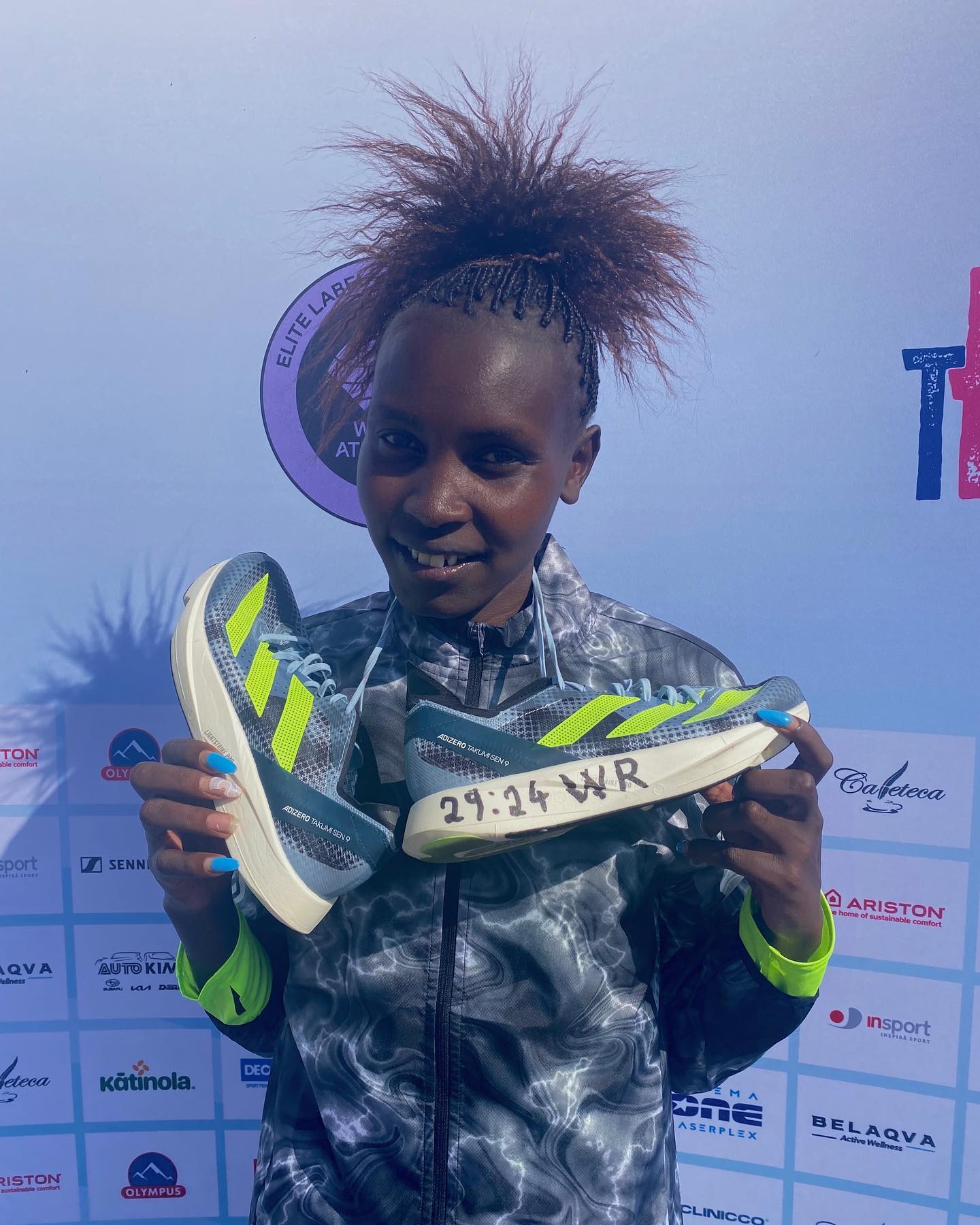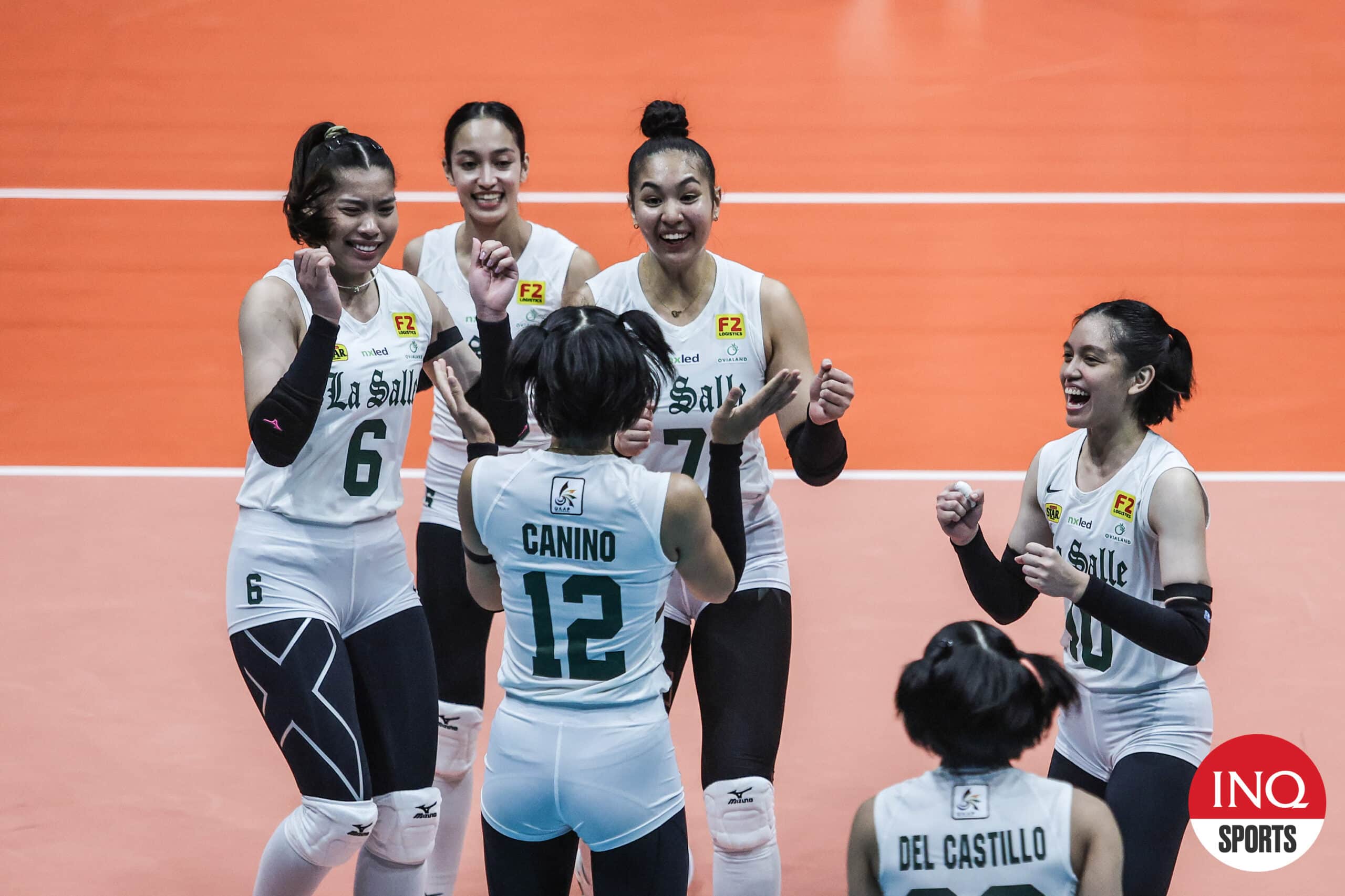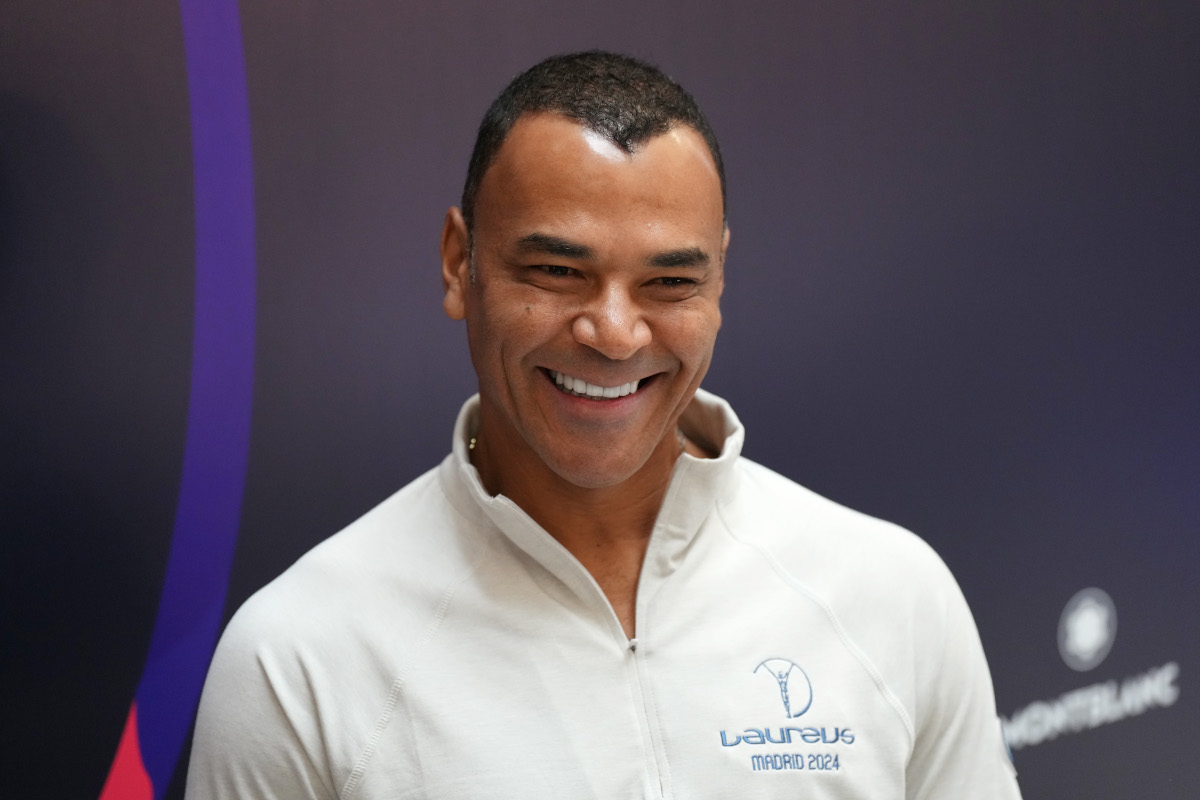
During their annual holiday party at Busch Stadium, the St. Louis Cardinals looked poised to get the only item on their wish list. It was the Friday after the Winter Meetings — the same day the Houston Astros agreed to deal Kyle Tucker to the Chicago Cubs .
Like an aftershock, word began to spread: After trading Tucker — a move that strongly deviated from the Astros’ usual operations — they were emerging as serious suitors for Nolan Arenado. Advertisement Anticipation grew throughout the day. So did momentum.

The Cardinals were on the verge of trading Arenado, their top offseason goal, and they’d not only pulled off a deal, they’d matched with one of the teams on the eight-time All-Star’s short and semi-problematic five-team list of acceptable destinations. How close? The “1-yard line,” according to a source. But now, the surreal sight of Arenado reporting back to Cardinals camp this month, greeted by hugs in the parking lot, makes it clear that the 1-yard line is suddenly several football fields away.
“Here we are,’’ Cardinals’ president of baseball operations John Mozeliak said in late January. “Things happen.” Over the course of a few days, the Astros deal fizzled, undone by an unlikely snag: When Arenado was presented with the trade, he balked.
According to multiple industry sources, Arenado was unsure of multiple things, including the timing of the deal and what direction Houston was trending. Though the Astros were on his original list of trade destinations, the loss of Tucker and the likely loss of free agent Alex Bregman had caused Arenado to reconsider. He wanted more time, sources described, and while he did not tell the Astros “no” definitively, he also did not want to rush into a decision.
Talks with other teams never got that far. The Cardinals had conversations with at least nine organizations — including some surprises. According to an industry source, multiple teams inquired about Arenado early in the offseason, including the Detroit Tigers, Kansas City Royals and Los Angeles Angels.
Those conversations did not yield much, as all three teams were considered non-starters. The Boston Red Sox had emerged as a potential fit until they signed Bregman days before position players were scheduled to report to their designated camps. Advertisement With no viable options left, any Arenado trade talks are on hold.
The player intent on landing with a World Series contender is back at the hot corner for a Cardinals team embarking on a youth movement after going 83-79. “It’s not awkward for my teammates and my coaches,” Arenado, 33, said to local reporters on the day he reported to camp. “And to be honest with you, it’s not really awkward with the front office.
They have a job to do and I have a job to do.” But the tale of Arenado’s offseason — of wrong turns, dead ends and one big change of direction — will hover over the start of this season, too. It’s the saga of a team determined to make a deal, a future Hall of Famer eager for a fresh start and how none of that was as simple as it looked.
The Cardinals were so intent on trading Arenado, that they started before the 2024 season ended. On the final road trip of the season, a six-game swing through Colorado and San Francisco, Mozeliak made the trip to Denver to start laying the groundwork for what would be a significant change. Mozeliak had planned an end-of-season news conference for the Monday after the finale to announce these changes to the public.
However, he wanted to meet with several players ahead of time. Arenado was at the forefront. In the same city where he first established his career, and where he was eventually traded from, Arenado was about to encounter somewhat of a similar experience.
The Cardinals were changing course, Mozeliak informed Arenado, and would be taking a step back for the immediate future. Understanding the Cardinals’ pivot didn’t align with what Arenado was seeking — or with what he had signed up for when he declined to exercise his final opt-out after the 2022 season — Mozeliak was open to exploring the trade. Before moving forward with the concept of a trade, both Arenado and Mozeliak had to come to terms with each other’s stipulations.
Advertisement Arenado wasn’t going to accept a trade just anywhere. Should he be dealt, it would be to a team that had firmly put itself in a position to contend for a World Series or a team that was planning to in the near future. That’s why talks with the Tigers, Royals and Angels never got off the ground.
Those teams were viewed as non-starters by the player, a source described, and no substantial discussions took place. But as word spread that the Cardinals were actively taking calls on Arenado, more teams began to take notice. To help Mozeliak’s search, Arenado presented him with a list of five teams that he would consider waiving his no-trade clause for.
According to multiple league sources, that list named the Los Angeles Dodgers, Boston Red Sox, New York Yankees, San Diego Padres and Houston Astros as possible destinations. Arenado also said he would be willing to move to first base , or at least play third base less frequently if it would lead to a trade. Still, Arenado’s list limited Mozeliak early in the offseason.
The Dodgers never matched Arenado’s interest , instead committing to Max Muncy as their everyday third baseman. The Padres already had an elite third baseman in Manny Machado, whose 11-year, $350 million contract takes him through 2033. Both Southern California teams were tabbed as unrealistic.
That left three possibilities, but all were preoccupied with what they viewed as more pressing matters. The Yankees were deep in the Juan Soto trenches, while the Red Sox were clear that bolstering their rotation was their first priority. The Astros were contemplating franchise-altering decisions about the futures of star players Tucker and Bregman.
It was clear early on that Arenado’s market was not a top priority for these clubs, but Mozeliak expressed confidence internally that would change for some teams once they had shored up their most pressing needs. Arenado and Mozeliak also had to consider the parameters set by the Cardinals. St.
Louis wanted to clear space on their roster for their younger players, but ownership also wanted to reduce payroll, citing uncertainty over their television deal with then Bally Sports Midwest, and a projected drop in gate revenue in 2025. This meant the Cardinals would not be willing to eat most of Arenado’s remaining salary (Arenado is owed $74 million over the next three seasons, with the Rockies on the hook for $10 million) even if it helped net a better return package. Mozeliak would need to negotiate a deal that minimized the amount of financial responsibility going forward.
Already, the runway that Mozeliak could work with was short. Still, he expressed confidence that a trade partner would emerge by the Winter Meetings in mid-December. Advertisement Mozeliak was right.
On cue, baseball’s hot stove began to heat up at the Winter Meetings. Juan Soto signed with the New York Mets, meaning the Yankees would be pivoting to multiple additions instead of one blockbuster deal. The Red Sox traded for Garrett Crochet, which allowed them to hone in on adding another right-handed infield bat.
The Astros were preparing to lose Bregman to free agency and were close to trading Tucker, who was entering his final year before free agency, to the Chicago Cubs. Suddenly, there seemed to be options. Optimism grew from Mozeliak throughout the week that a trade would be completed quickly.
When St. Louis-based reporters asked during a media session if he was going to trade Arenado, the usually tight-lipped Mozeliak responded, “It’s my intention to try.” When the Winter Meetings concluded later that week, there was no obvious traction on the Arenado front.
Behind the scenes, however, the foundation of a doomed trade was already taking place. The Cardinals and Astros had agreed on the framework of a deal, one in which Houston would pay most of Arenado’s remaining salary. Per multiple sources familiar with the proposed deal, the Cardinals would pay roughly $15 million of Arenado’s salary — around 25 percent of their remaining commitment — over the next three years, well satisfying ownership’s desire to decrease payroll.
The Astros felt the need to make some financial concessions due to concerns over both payroll and the longevity of their farm system, but wanted to remain a postseason club. Houston was eager to bring in the eight-time All-Star, especially in the wake of trading Tucker and probably losing Bregman. From Houston’s perspective, Arenado was the ideal answer.
Still an elite defensive third baseman, Arenado would theoretically replace Bregman for a much cheaper cost, who was due for a monumental raise in his first year of free agency. There was minimal concern over Arenado’s offensive decline, with the belief that his pull-power swing would match up ideally with the hitter-friendly dimensions of Daikin Park. Both the Cardinals and the Astros felt the trade would satisfy some of their most pressing needs, and both were pushing to complete it as soon as possible.
All that remained was Arenado agreeing to it, something Mozeliak did not envision being an issue. Advertisement That’s when Arenado began having second thoughts about whether the Astros were a fit. Mozeliak gave him the weekend to decide.
By Monday, Arenado was still not sold. He did not want to rule out the Astros for good — something he communicated to both St. Louis and Houston — but he wanted more time to see how his market would play out and just how much Bregman’s free agency was impacting it.
He also did not want his family (Arenado has a 2-year-old daughter, Levi, with his wife, Laura) to have to adjust to another organization unless he was entirely sure of his decision. Both Mozeliak and Houston general manager Dana Brown were growing antsy, but the Astros still believed Arenado would accept the trade. However, the following day, Arenado officially informed Mozeliak he would not waive his full no-trade clause to join Houston — at least not at the current time.
He would be open to conversations later in the offseason when more certainty about the Astros’ roster and his own market had been established. But Arenado also understood that Houston could pivot, which would essentially end chances of further negotiations later in the winter. That’s exactly what the Astros did.
By the end of the week, Houston had signed free agent Christian Walker to a three-year, $60 million deal — slightly over what it had committed to Arenado. An angered Mozeliak was forced to go back to the drawing board, and would later lament the timing of the Tucker trade. “I was a little surprised,” Mozeliak said in January when asked about Arenado’s block of the Astros trade.
“Looking back at that, when Tucker was traded it was almost like order of operations. Had we been ahead of that?” Mozeliak and Arenado did not speak directly for the next several weeks, with both parties thoroughly frustrated with the fallout from the Astros ordeal. Mozeliak did keep in contact with Arenado’s long-time agent, Joel Wolfe.
All parties knew that Arenado’s fate rested in waiting out Bregman’s free-agency decision, which was shaping up to be a drawn-out process. For the next two months, things remained in gridlock. Bregman’s free agency decision was not close to resolution.
The Yankees never followed up past the initial inquiry, instead trading for closer Devin Williams and Cody Bellinger and signing Paul Goldschmidt. Additional teams continued to check in on Arenado, including the Seattle Mariners, but according to league sources, Arenado saw the Red Sox as the best remaining fit. Advertisement The problem? Boston was also heavily in the mix for Bregman.
Though Boston was also keeping continuous tabs on Arenado, their heavy favorite was the former. Those close to Bregman also believed Boston was his top choice, but Bregman was also looking for a five-to-six-year deal, and the Red Sox were not offering that long of a contract. Mozeliak kept in contact with chief baseball officer Craig Breslow throughout the next several weeks.
The Red Sox had genuine interest in Arenado, but were prepared to wait out Bregman and communicated that to Mozeliak. As spring training neared, Boston’s confidence in landing Bregman began to wane. Conversations with the Cardinals began to pick up more frequently.
Again, the Cardinals believed they had found a legitimate suitor. But in this situation, Mozeliak had even less control than before. It helped that Chaim Bloom — the former top executive for the Red Sox and Mozeliak’s eventual successor — was available for insight on potential return packages.
Still, until Bregman made a decision, Arenado and the Cardinals remained in limbo. Once pitchers and catchers began reporting to their spring sites, Bregman’s market finally began to heat up. As rumors began to spread within the industry, the belief was that Bregman would sign with the Tigers, as Detroit was offering the longest deal.
(According to The Athletic ’s Cody Stavenhagen, the Tigers offered Bregman a six-year, $171 million contract with an opt-out after 2026. The Athletic’s Patrick Mooney reported the Cubs offered Bregman a four-year, $115 deal.) But on the Wednesday night before the Cardinals’ position player report deadline, the Red Sox upped their offer with a three-year, $120 million deal (good for a $40 million average annual value, though $20 million would be deferred each year).
It wasn’t the long-term deal Bregman coveted, but it came with enough guaranteed money that it didn’t matter. Bregman wanted to be a Red Sox all along, and Boston — despite weeks when the front office was convinced otherwise — landed its top choice as well . Four months of extensive negotiating came to a screeching halt.
All five teams on Arenado’s initial list had been exhausted. The Cardinals had officially struck out. A scenario that was always in play, but one that Arenado and Mozeliak both believed would not take place, was suddenly an actuality.
After months of attempting to move him somewhere else, St. Louis was now preparing to bring Arenado back. Advertisement Arenado reported to his fifth Cardinals camp on Sunday.
He was promptly greeted by manager Oli Marmol, who welcomed him with a hug in the parking lot. He then met with Mozeliak, and the two discussed how they could move forward. Similar to their conversation at the end of last season, it was a professional affair.
Arenado could still be traded, multiple sources say, though it would require major concessions from both sides — or a drastic change in operations from any of the five teams previously listed by Arenado. “If something comes up and it makes sense, I’ll certainly get with him and we’ll talk about it,” Mozeliak said over the weekend. “But it’s not something where I’m getting up every morning and chasing the waiver wire or chasing injuries.
I think from our fan perspective, from our team perspective, from our perspective, he is a part of the Cardinals.” Arenado has also said publicly that he likely will not expand his list. “I don’t see myself changing that list ever,” Arenado said.
“I have a family now. ..
. To be willing to pick up my family and move them, it has to be something that’s worth it.” That makes a potential trade more of a speculation than a reality.
Mozeliak and Arenado have squashed any lingering frustration from the Astros fallout, multiple team sources say, and Arenado has pivoted to focusing on bettering his play after two consecutive years of offensive decline. Still, this is not the scenario Mozeliak envisioned last October when the Cardinals first announced their plan to transition to a younger, more developmentally-focused roster and trim payroll. Trading Arenado was one of the organization’s most pressing matters, with Mozeliak even identifying it as “Priority 1, 2 and 3.
” This is also not the ideal scenario for Arenado, who has been vocal about his desires to compete for a championship-level club — something the Cardinals do not project to be in the immediate future. While he understands the direction the Cardinals are taking and why they are doing so, Arenado — who will turn 34 in April — also feels the time is ticking on his career. Advertisement “Did I sit here in the offseason and think I wasn’t coming back? No, I knew there was always a chance of me coming back, so I’m prepared to be here,” Arenado said.
“The one thing about this place, I’m very comfortable. I know it. That’s going to help me get ready for the season.
And I’m in the right place. I feel ready. I have a lot to prove.
“At the end of the day, I’m a ball player. I’m a Cardinal until I’m told I’m not.” — The Athletic ‘s Ken Rosenthal and Chandler Rome contributed to this story.
(Top photo of Nolan Arenado: Rich Storry / Getty Images).















